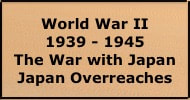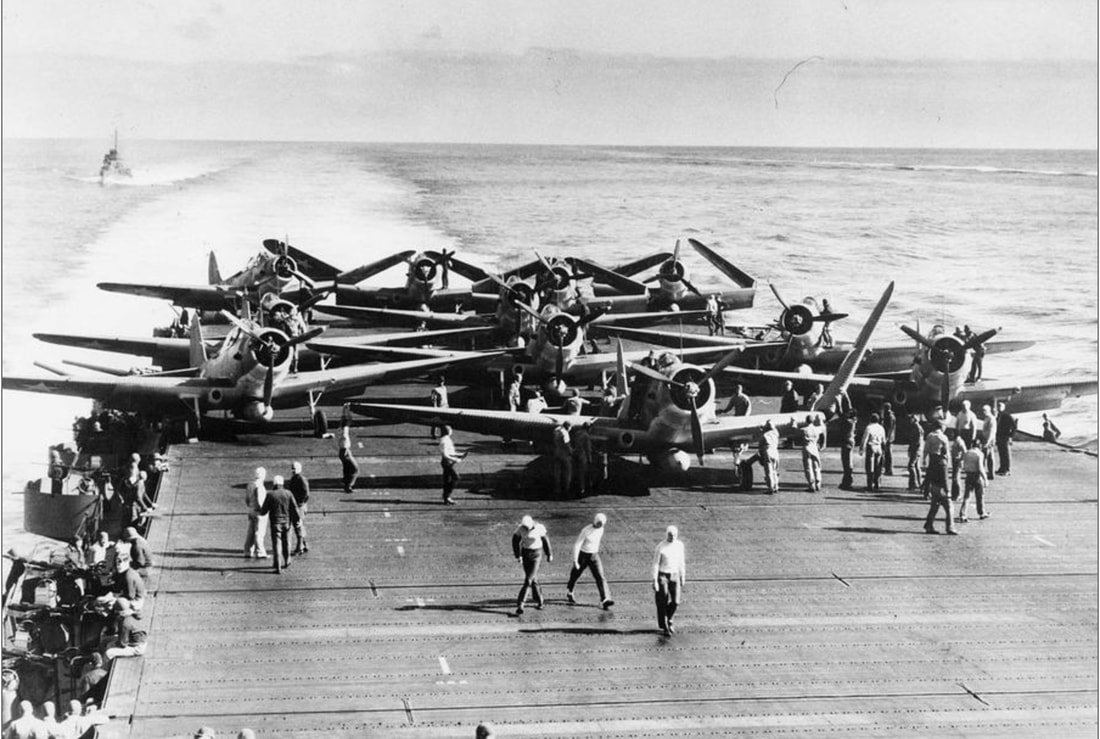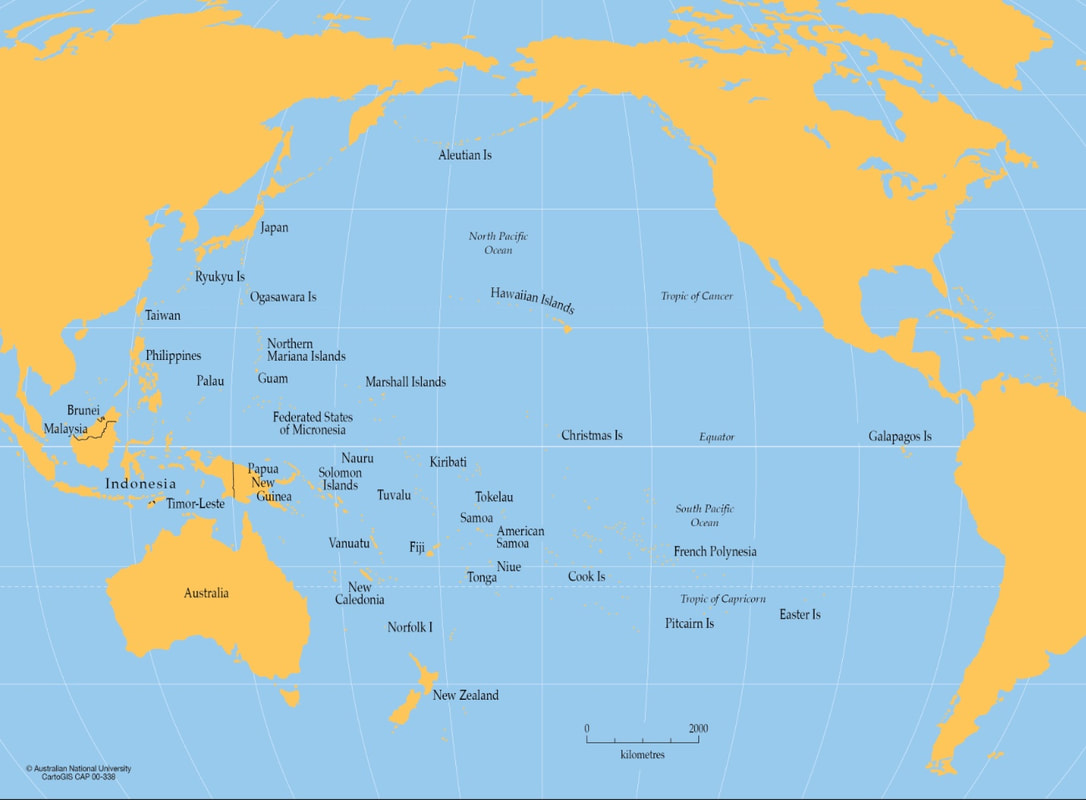bigpigeon.us webpage WWII Japan > Japan Overreaches, © 2024 by Robert A. Christiansen, updated by RAC 21 Apr 2024.
Japan's mid-1942 Pacific offensives culminated in the Battle of the Coral Sea and the Battle of Midway, neither being Japanese victories.
Background
Japan's mid-1942 Pacific offensives culminated in the Battle of the Coral Sea and the Battle of Midway, neither being Japanese victories.
Background
From December 1941 to Jun 1942, Imperial Japanese military forces made remarkable advances in:
- Southeastern Asia against British Empire forces (Malaya, Singapore, and Burma).
- The Western Pacific (the Philippines and the Dutch East Indies).
- The Central Pacific (Guam and Wake islands and the Gilbert Islands).
- Islands in the Southwestern Pacific (New Britain, portions of the Solomon Islands, and portions the northern coast of New Guinea).
The Early 1942 US Carrier Raids
Fortunately, all three United States aircraft carriers in the Pacific were at sea when Japanese aircraft attacked Pearl Harbor. In February 1942, these carriers, organized into several task forces, began a series of raids on Japanese-occupied islands in the Pacific. Although these raids inflicted little damage, they provided invaluable experience in carrier combat operations, experience soon to be used in two pivotal naval battles.
Revised Japanese Military Goals
Early in 1942, the Japanese military, intoxicated by their ongoing success, began planning a second, more-ambitious, phase of their Pacific offensive. The second phase included isolating Australia, which would both impede the future use of Australia as a springboard for Allied counteroffensives and facilitate a possible future Japanese invasion of Australia. The second phase was entrusted to Imperial Japanese Navy forces, as much of the Imperial Japanese Army was tied up in the war in China.
|
Goals for this new Japanese offensive included (in a clockwise direction across the Pacific Ocean starting in the north):
|
Meanwhile the military high command in the United States reached two conclusions:
- With the December destruction of the US battleship fleet at Pearl Harbor, It was pointless to attempt reinforcing our military still fighting in the Philippine Islands, 5,000 miles west of Hawaii.
- If the second Japanese offensive succeeded, communications between Australia, our major partner in the Pacific, and the United States would become much more difficult. Thus, it was necessary to begin rushing army and marine units to various locations in the Pacific in an effort to deal with such a contingency. Soon US military units were located in Australia, in all the locations on the above bullet list except for Attu and Kiska, and in other locations such as Samoa and New Zealand.
The Pivotal mid-1942 Battles
Starting in May 1942, American and Austrailian forces stopped the second Japanese Pacific offensive by a series of difficult victories, thus keeping the sea and air lanes open between the United States and Australia and keeping Japanese bases out of range of Pearl Harbor:
- The Battle of the Coral Sea, fought by the US Navy against the Imperial Japanese Navy off the northeastern coast of Australia.
- Most spectacularly, in the Battle of Midway west of Hawaii in the Central Pacific, the US Navy decisively defeated the June 1942 Japanese attack on Midway Island.
- By the Australian Army, In two locations in Papua in southeastern New Guinea.
Later Japanese Attacks in Southeastern New Guinea
|
In March 1942, a sizable Japanese force had landed in the Buna area on the north coast of the Australian Territory of Papua.
In the summer of 1942, after Coral Sea and Midway, Japan made two further attempts to gain a foothold on the southern coast of New Guinea. Both attempts were turned back by Australian troops with some American assistance.
In late 1942, the Kokoda Trail operations segued into the Buna-Gona battle, outlined in the New Guinea webpage. |
Sources for Big Pigeon's WWII Japan > Japan Overreaches webpage:
- The page header photo, USS Enterprise at Midway, courtesy of theatlantic.com, shows the preparation of Torpedo Squadron VT-6 for their fatal flight. Of the 41 planes of the three torpedo squadrons that flew from American carriers at Midway, only six returned.
- The Pacific Ocean map is courtesy of CartoGIS Services at College of Asia and the Pacific, Australian National University, Canberra.
- The Eastern New Guinea map is courtesy of wikipedia.




